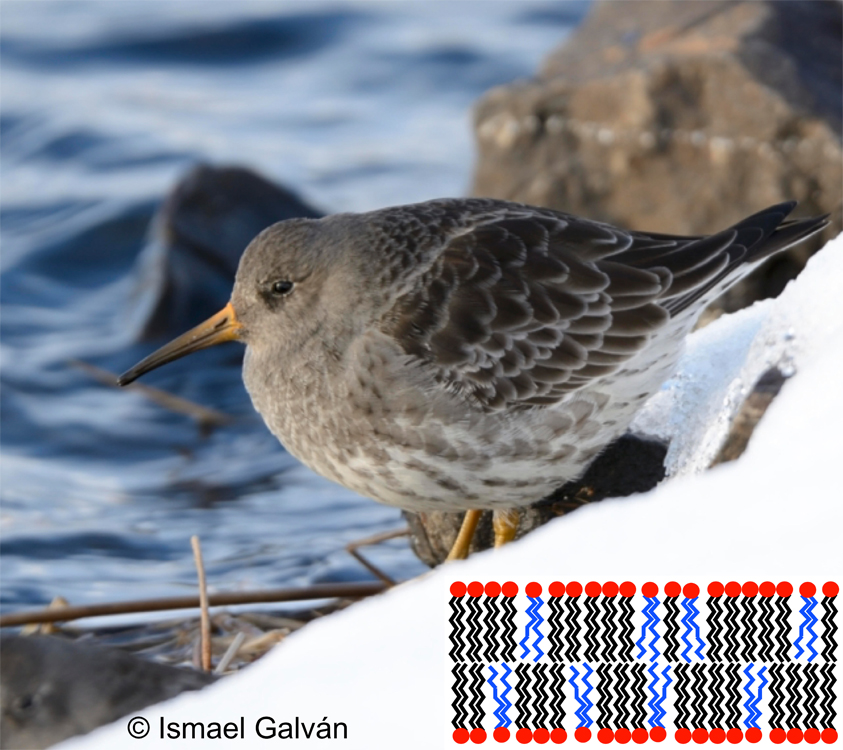The lipid composition of cell membranes exerts a crucial influence on cell physiology. Indeed, one double bond triggers membrane fluidity, essential for cell functionality, but additional double bonds increase the susceptibilty to peroxidation, which produces reactive compounds that impair the viability of cells. It has therefore been suggested, but never tested in an extensive comparative context, that the composition of membrane fatty acids has been optimized during evolution. A similar prediction has been made for fatty acid chain length, on which susceptibility to peroxidation also depends. This study tested for stabilizing selection on fatty acid composition by evaluating the fitting of the single stationary peak (SSP) model of evolution to a large dataset from 107 species of birds, against alternative evolutionary models. Across-species variation in average chain length and in the proportion of monounsaturated fatty acids (MUFAs), but not in the proportion of polyunsaturated (PUFAs) nor saturated (SFAs) fatty acids, was better explained by SSP models than by other models. Results show optimum values of fatty acid chain length and proportion of MUFAs of 18 C atoms and 25.5% mol, respectively, the strength of stabilizing selection being particularly high in chain length. This is the first evidence of evolutionary optimization in fatty acid composition, suggesting that certain values may have been selected because of their adaptive capacity to minimize susceptibility to lipid peroxidation. informacion[at]ebd.csic.es: Galván (2017) Evidence of evolutionary optimization of fatty acid length and unsaturation. J Evol Biol doi:10.1111/jeb.13198
http://onlinelibrary.wiley.com/doi/10.1111/jeb.13198/full

 Las altas temperaturas están provocando que las lagunas y las marismas de Doñana pierdan agua rápidamente
Las altas temperaturas están provocando que las lagunas y las marismas de Doñana pierdan agua rápidamente




